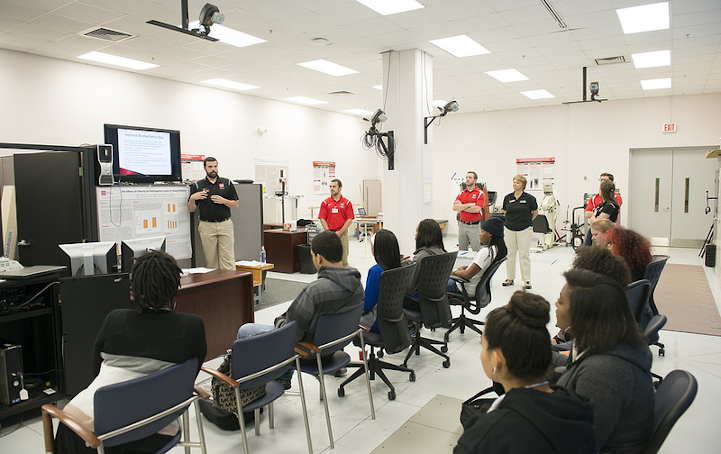Outreach and Services
Clinical Gait Analysis
Sponsored by the WSSU School of Health Sciences and Wake Forest School of Medicine, motion analysis is performed in the Human Performance and Biodynamics Lab to measure movement patterns in people who have complex conditions involving muscles, joints, nerves or even bones. Quantitative motion analysis is useful in identifying the underlying causes for movement abnormalities in pathologic patient groups, such as in patients with cerebral palsy. The results of motion capture systems have been shown to be a useful adjunct tool in determining the best course of treatment.
Orthopaedic surgeons, physical therapists, biomedical engineers, physical therapy students and medical students are all involved in a collaborative effort to solve challenging problems that are often multidisciplinary in nature. To help families become informed and involved, the team of specialists thoroughly explains the process of motion analysis and its effect on treatment outcomes.
A typical analysis includes:
- Clinical Examination - A physical therapist will examine the patient and test muscle strength and range of motion of the hips, knees and ankles
- GaitRite Analysis - Patients will be asked to walk across a pressure-sensored carpet walkway while being videotaped
- 3D Motion Analysis - Reflective markers will be placed on the patients' skin so that high speed cameras can follow the movement of the patient
- EMG Recordings - Sensors will be placed on the patient to record the electrical activity for several muscles in each leg
National Biomechanics Day
The National Biomechanics Day (NBD) initiative began in 2016, as an event synchronized among Biomechanics labs across the country. This initiative includes the demonstration of biomechanical concepts to middle/high school students and teachers through an agenda of shared interactive activities and demonstrations utilizing the hi-tech equipment in the Human Performance and Biodynamics Lab. National Biomechanics Day seeks to expand the influence and impact of Biomechanics in our society. The mechanism through which NBD manifests this goal is by teaching youth about Biomechanics and thereby expand the number of people entering careers that may include the practical application of Biomechanics, such as Physical Therapy. The Human Performance and Biodynamics Lab continues to welcome students from the Winston-Salem/Forsyth County region (along with their teachers), to provide the opportunity to learn about, observe, and participate in biomechanical assessments that can be used to improve quality of life.

For more information, call the HPB Lab at 336-716-0521, or email the HPB Lab Manager Chris Wendt at wendtcs@wssu.edu.
A collaboration between Wake Forest University School of Medicine and Winston-Salem State University School of Health Sciences
